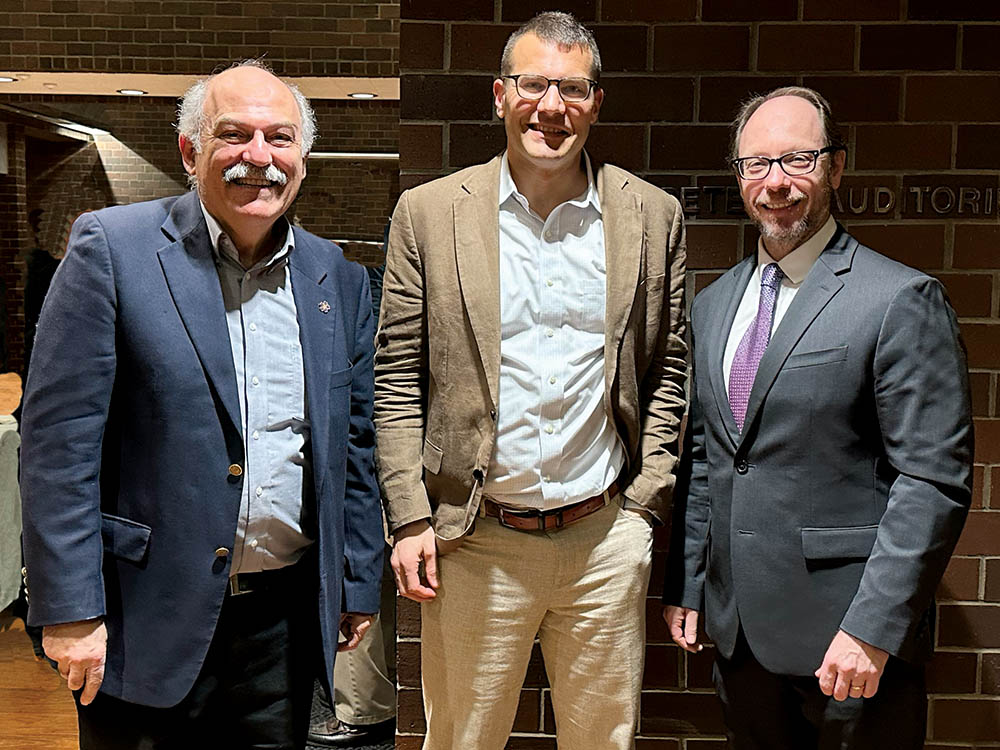
Careen Derkalousdian
Staff Writer
“This book [The Rise of the Western Armenian Diaspora] tells the story of how Istanbul became the world’s largest Armenian intellectual and demographic center in the aftermath of mass migrations caused by a civil war – a rebellion in the Ottoman Empire that took place in the seventeenth century,” stated Dr. Henry Shapiro.
On Thursday, January 26, 2023, Dr. Shapiro, a Polonsky Fellow at the Van Leer Institute in Jerusalem, presented a lecture regarding his book titled The Rise of the Western Armenian Diaspora in the Early Modern Ottoman Empire. In his presentation, Dr. Shapiro highlighted key aspects of his book, such as the causes of the Armenian mass migrations in the seventeenth century, and noted that it was his duty to bring Armenians into the narrative of Ottoman history, a history that tends to exclude non-Muslims.
Dr. Shapiro began his lecture by stating how he became interested in this topic. After completing his Master’s degree at Sabanci University, he lived in Istanbul for six years. The time that he spent working in Turkish academia laid the groundwork for his book and shaped his interest in utilizing classical Armenian sources for the study of the history of the Armenians in the early modern Ottoman Turkish Empire.
When comparing books on Armenian and Turkish history, Dr. Shapiro came across a series of rebellions known as the “Celali [Jelali] Revolts” that took place in the early seventeenth century, which Dr. Shapiro referred to as a civil war. He found it striking that none of the books on Ottoman history took into account primary Armenian sources or even mentioned the Armenians at all. A key question that needed to be answered was whether or not the “Celali Revolts” were also discussed in Armenian historical accounts. In order to answer this burning question, Dr. Shapiro moved to Armenia and began studying classical Armenian, in order to ready the primary sources of the period.
While reading seventeenth century Armenian sources in the Matenadaran [Mesrop Mash-tots Manuscript Library in Yerevan], he discovered that the “Celali Revolts” were in fact mentioned in these texts and that they prompted mass migrations towards western Anatolia. This key finding inspired Dr. Shapiro to dig deeper into this topic by conducting a case study on Armenian mass migrations from Kemah in eastern Anatolia to Rodosto, a port city near Istanbul. He focused on Kemah, as it was once a site of holy pilgrimage for Armenians, and where many former Zoroastrian centers had been converted into churches or monasteries by St. Gregory the Illuminator.
As Armenians migrated westward and a new diaspora formed, two important Armenian authors emerged from Kemah, according to Dr. Shapiro. One of these, Grigor Daranalts’i, composed a chronicle of his life in the seventeenth century, and the sole copy of this chronicle is housed in the Armenian Patriarchate of Jerusalem.
The second important writer, Eremia K’eōmurchean, was the first Armenian author to write large-scale works on Ottoman history. K’eōmurchean made significant contributions to Armenian literary tradition as a historian. Both of these authors played a major role in shaping Istanbul as an Armenian demographic cultural center.
Dr. Shapiro concluded his lecture by summarizing his first book and discussing his future research direction. “The book is a story of civil war in Anatolia, the ‘Celali Revolts’ that prompt disproportionately Armenian mass migrations because they were taking place in historical Armenian lands,” said Dr. Shapiro.
“It is the story of settlements in western Anatolia and Istanbul told through the perspective of Ottoman Turkish archival documents.
Dr. Shapiro is currently working on his second book, which focuses on Armenian Catholic missionaries who became active in the Ottoman Empire during the seventeenth century. He believes that the Armenian Catholics provide more historical examples of how the Ottomans used the talents of non-Muslims to govern their vast Empire.
In this way, Dr. Shapiro’s research will continue to incorporate Armenian perspectives into the narrative of early modern Ottoman history.
 Hye Sharzhoom Armenian Action
Hye Sharzhoom Armenian Action